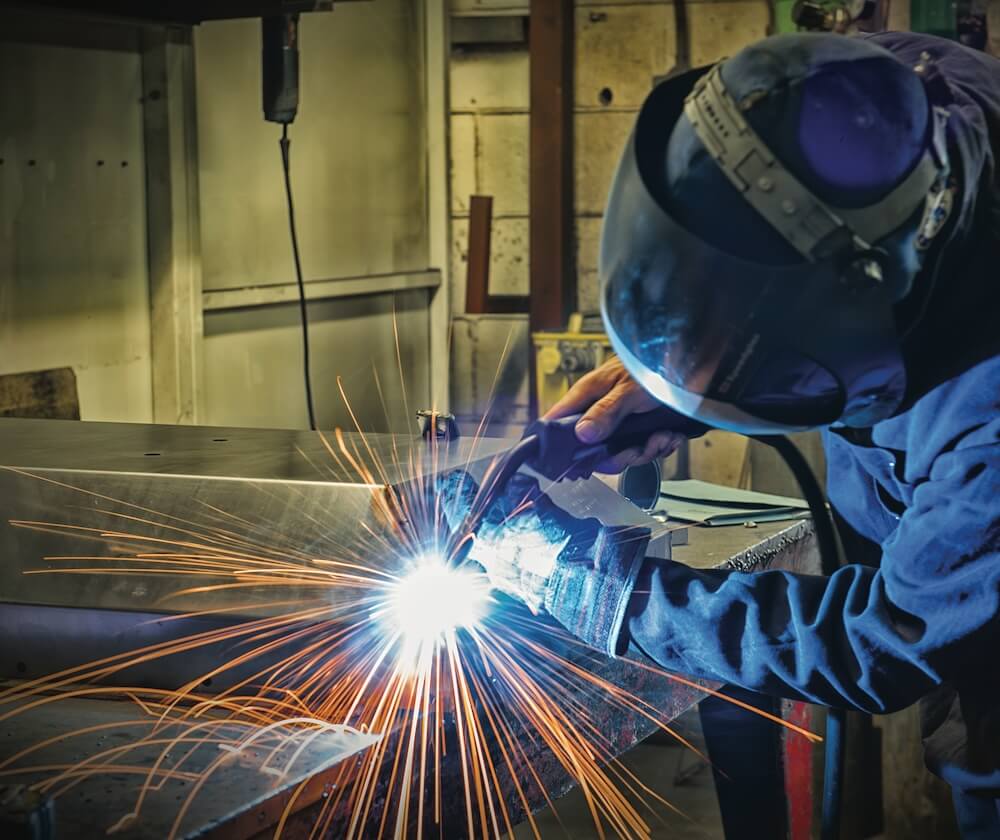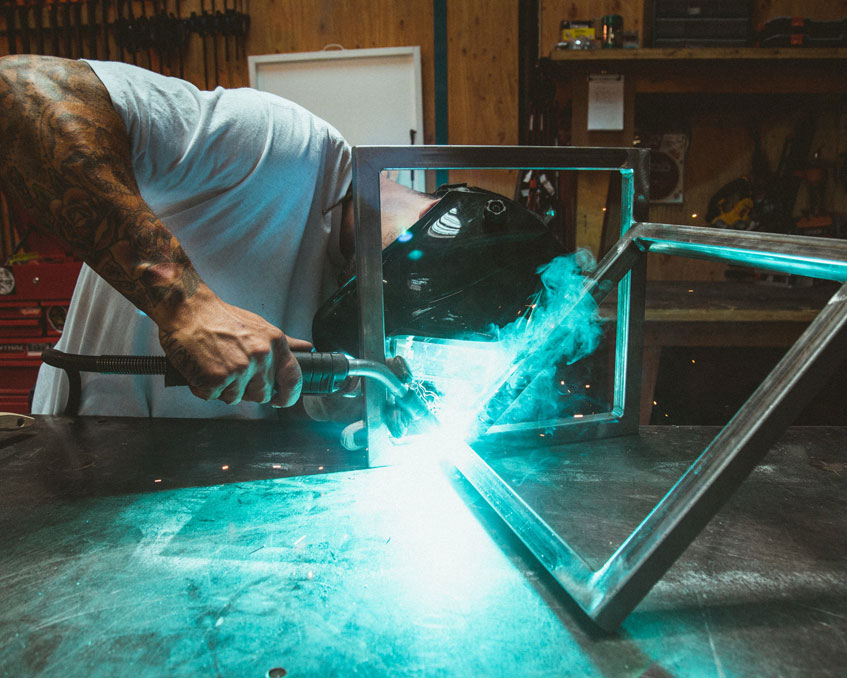Common Welding Repair Service Issues and Exactly How to Address Them Properly
Welding repairs often encounter an array of issues that can endanger the integrity of the end product. Typical problems include insufficient infiltration, porosity, and misalignment, amongst others. Each flaw presents one-of-a-kind obstacles that call for particular techniques for resolution. Comprehending these problems is essential for welders intending to improve their results and skills. This conversation will check out these typical welding fixing problems and efficient approaches to resolve them.
Poor Infiltration
Inadequate penetration takes place when the weld metal falls short to fully fuse with the base product, resulting in weak joints and potential structural failings. This concern often stems from insufficient warm input, incorrect electrode angle, or incorrect welding speed. Welders might run into poor infiltration due to a mistake of the necessary specifications for a particular material density or kind. In addition, contamination on the base material's surface can hinder reliable bonding, exacerbating the problem. To address poor infiltration, welders must guarantee ideal settings on their equipment and keep a tidy work surface. Routine inspection of welds is suggested to identify any kind of deficiencies early, allowing for prompt improvements and the avoidance of compromised structural stability in bonded settings up.
Porosity
Porosity is an usual defect in welded joints that manifests as small gas bubbles entraped within the weld metal. This flaw can compromise the stability of the weld, causing reduced strength and prospective failure under stress. Montana Mobile Welding and Repair Belgrade Welding. Porosity generally arises from contamination, moisture, or incorrect welding techniques, which allow gases to get away into the liquified weld swimming pool. To address porosity, welders ought to ensure correct surface preparation, preserve a clean working setting, and make use of ideal welding criteria. In addition, choosing the ideal filler material and protecting gas can mitigate gas entrapment. Regular assessment and screening of welds can aid determine porosity early, assuring prompt rehabilitative actions are taken, therefore maintaining the top quality and dependability of the bonded framework
Imbalance
Misalignment in welding can arise from different aspects, including inappropriate setup and thermal growth. Recognizing the source is essential for effective resolution. Several adjustment techniques are offered to realign elements and guarantee architectural integrity.
Causes of Misalignment
Welding imbalance commonly stems from a range of underlying problems that can jeopardize structural integrity. One primary reason is improper fit-up of parts before welding, which can cause voids and unequal surfaces. Variants in thermal expansion throughout the welding process can also cause distortion, especially if the products being signed up with have various coefficients of growth. Furthermore, inadequate fixturing and securing might fall short to hold components safely in area, causing motion during welding. Badly conserved tools, including welding devices and devices, might introduce disparities in the weld bead, more adding to misalignment. Operator mistake, stemming from not enough training or experience, can likewise play a considerable duty in creating misaligned welds.

Correction Strategies Readily Available
Addressing misalignment effectively requires a combination of corrective strategies customized to the details issues handy. One common approach is making use of fixtures or jigs to hold elements in the correct setting during welding, guaranteeing consistent alignment. In addition, pre-heating the materials can help in reducing distortion and enhance fit-up. For significant misalignment, mechanical adjustment strategies, such as making use of hydraulic jacks or clamps, can be used to deal with the position before welding. Post-weld heat treatment may likewise be essential to soothe stresses created by imbalance. Finally, mindful examination and adjustment throughout the arrangement phase can avoid imbalance problems from ending up being significant problems, advertising a smoother welding procedure and boosting general architectural integrity.
Distortion
Distortion is an usual challenge in welding that can occur from different factors, consisting of unequal heating & cooling. Recognizing the root causes of distortion is essential for implementing efficient prevention strategies. Resolving this problem not only enhances structural honesty however likewise boosts the overall high quality of the weld.
Reasons for Distortion
When based on the intense warmth of welding, products commonly go through changes that can cause distortion. This phenomenon mainly emerges from thermal growth and tightening throughout the welding process. As the weld location warms up, the product broadens; upon cooling, it gets, which can develop interior stresses. Furthermore, irregular heating throughout a workpiece can worsen these stresses, leading to warping or flexing. The kind of product likewise plays a considerable function; metals with differing thermal conductivity and coefficients of expansion might react in a different way, resulting in unforeseeable distortions. Moreover, poor joint layout and poor fixturing can add to misalignment throughout welding, boosting the possibility of distortion. Comprehending these reasons is necessary for effective welding repair and prevention techniques.
Prevention Techniques
Efficient avoidance strategies for distortion throughout welding emphasis on managing warmth input and making certain appropriate joint design. Keeping a consistent heat input assists to reduce thermal development and tightening, which can result in distortion. Using techniques such as preheating the work surface can likewise minimize the temperature slope, promoting consistent heating. Furthermore, selecting proper joint styles, such as T-joints or lap joints, can boost security and reduce stress and anxiety concentrations. Applying appropriate fixturing to protect the workpieces in area even more aids in maintaining alignment during the welding process. Staggered welding sequences can distribute warmth much more evenly, preventing local distortion. By using these methods, welders can considerably lower the chance of distortion and enhance the total high quality of their welds.
Cracking
Breaking is an usual problem experienced in welding repair work, commonly resulting from different variables such as inappropriate cooling prices, product choice, or inadequate joint prep work. The incident of splits can substantially compromise the honesty of the weld, causing possible failings throughout operation. To resolve this issue, welders have to initially examine the root causes, making sure that products are suitable and suitably picked for the details application. Additionally, managing the cooling price throughout the welding procedure is essential; fast air conditioning can generate stress and anxiety and result in splitting. Appropriate joint design and preparation also add to decreasing the threat. Applying these strategies can improve weld high quality and durability, inevitably decreasing the chance of breaking in ended up weldments.

Insufficient Combination
A substantial concern in welding fixings is incomplete combination, which occurs when the weld steel does not effectively bond with the base material like it or previous weld passes - Belgrade Fabrication. This issue can bring about weaknesses in the joint, potentially compromising the stability of the bonded structure. Elements adding to incomplete blend include not enough heat input, improper welding strategy, and contamination of the surface areas being signed up with. To address this concern effectively, welders must guarantee appropriate pre-weld cleansing and surface area preparation, in addition to readjust their welding parameters to attain adequate penetration and fusion. Routine inspection during the welding process can also aid identify insufficient blend early, enabling timely rehabilitative actions to enhance the total top quality of the weld
Overheating
While welding repairs can improve structural honesty, overheating provides a significant difficulty that can lead to material deterioration. Extreme heat during welding can change the mechanical residential or commercial properties of steels, resulting in minimized toughness, boosted brittleness, and warping. This sensation is especially vital in high-stress applications where structural integrity is paramount. Determining getting too hot can entail visual evaluations for staining or distortion, along with keeping track of temperature level during the welding procedure. To minimize the dangers associated with overheating, welders must employ proper techniques, such as regulating warmth input, adjusting traveling speed, and utilizing ideal filler products. In addition, applying pre- and post-weld heat treatments can assist bring back material residential or commercial properties and improve the total quality of the fixing, making certain long-term efficiency and safety.
Frequently Asked Inquiries
What Are the Usual Indicators of a Welding Defect?

Just How Can I Test My Welds for Quality?
To check welds for top quality, one can make use of visual assessments, ultrasonic testing, and radiographic methods. Each technique assures structural stability, identifies defects, and verifies adherence to specified criteria, ultimately boosting the reliability of the welded joints.
What Safety Precautions Should I Take While Welding?
When welding, one should prioritize safety by using suitable personal protective devices, guaranteeing correct ventilation, safeguarding combustible products away, preserving a tidy office, and understanding environments to stop mishaps and injuries.
Can I Fix a Weld Without Redesigning the Entire Joint?
Repairing a weld without remodeling the whole joint is feasible, depending upon the damages (Montana Mobile Welding and Repair Welding). Methods such as grinding, including filler product, or using a welding procedure can effectively attend to certain imperfections while maintaining the surrounding structure
What Tools Are Important for Effective Welding Repairs?
Crucial devices for efficient welding repair work include a welding device, cord brush, mill, safety gear, clamps, and filler products. Each device plays an important duty in guaranteeing high quality and safety and security throughout the fixing procedure. Porosity commonly occurs from contamination, dampness, or improper welding my company techniques, which permit gases to escape into southern welding the molten weld pool. Improperly conserved devices, including welding equipments and tools, may introduce disparities in the weld grain, more contributing to misalignment. When subjected to the extreme warm of welding, materials commonly go through adjustments that can lead to distortion. Cracking is a common issue come across in welding repair work, commonly resulting from numerous factors such as inappropriate air conditioning rates, product choice, or insufficient joint prep work. A significant concern in welding repair services is incomplete combination, which happens when the weld steel does not adequately bond with the base material or previous weld passes.